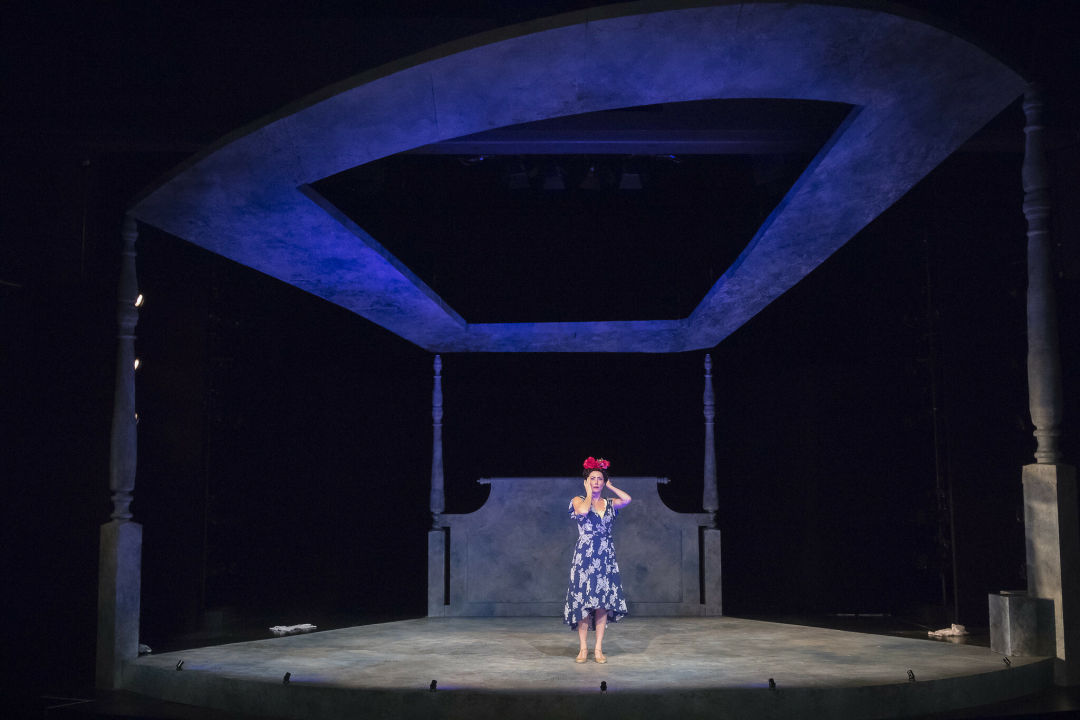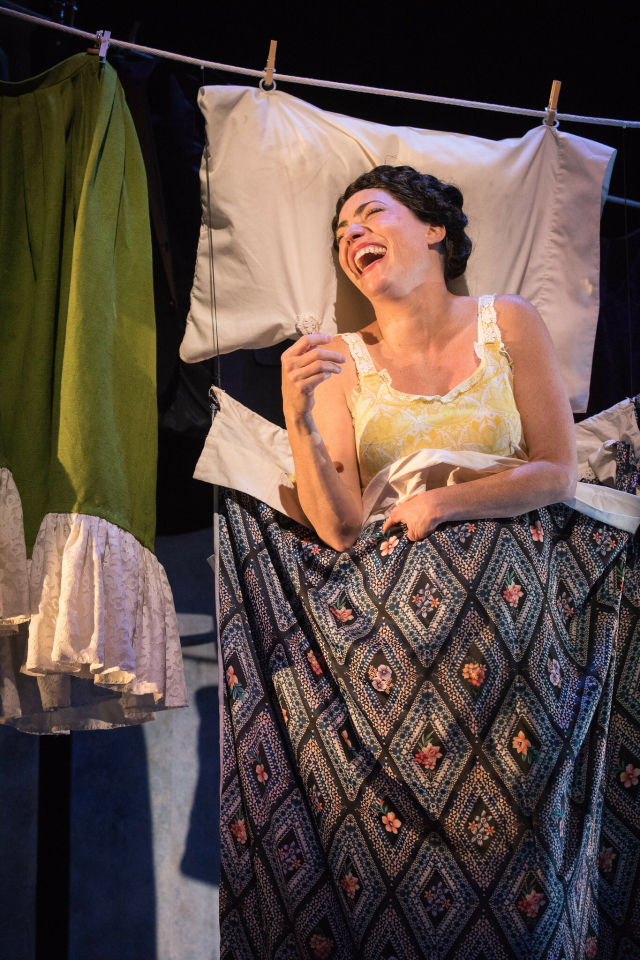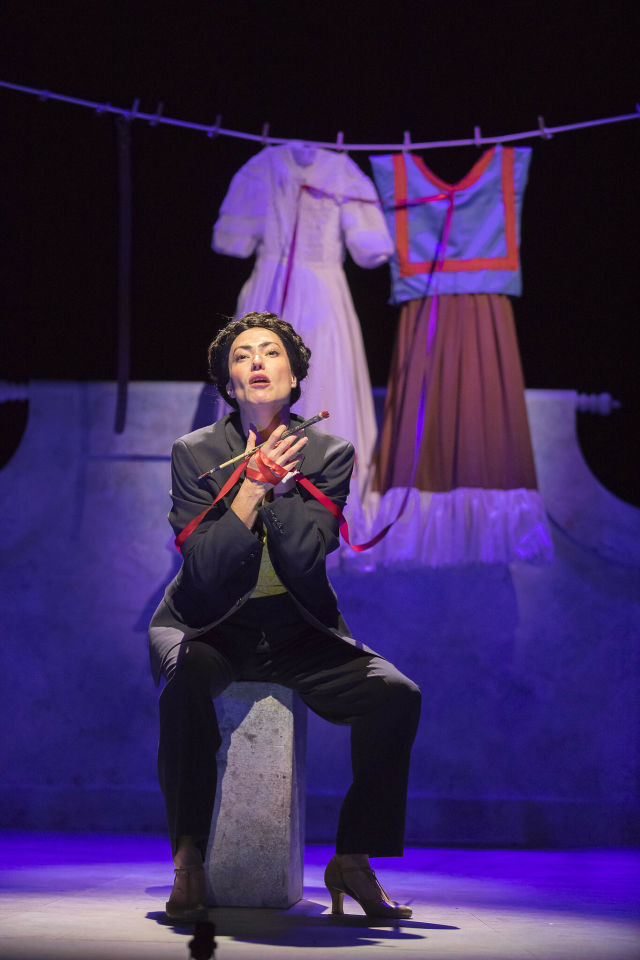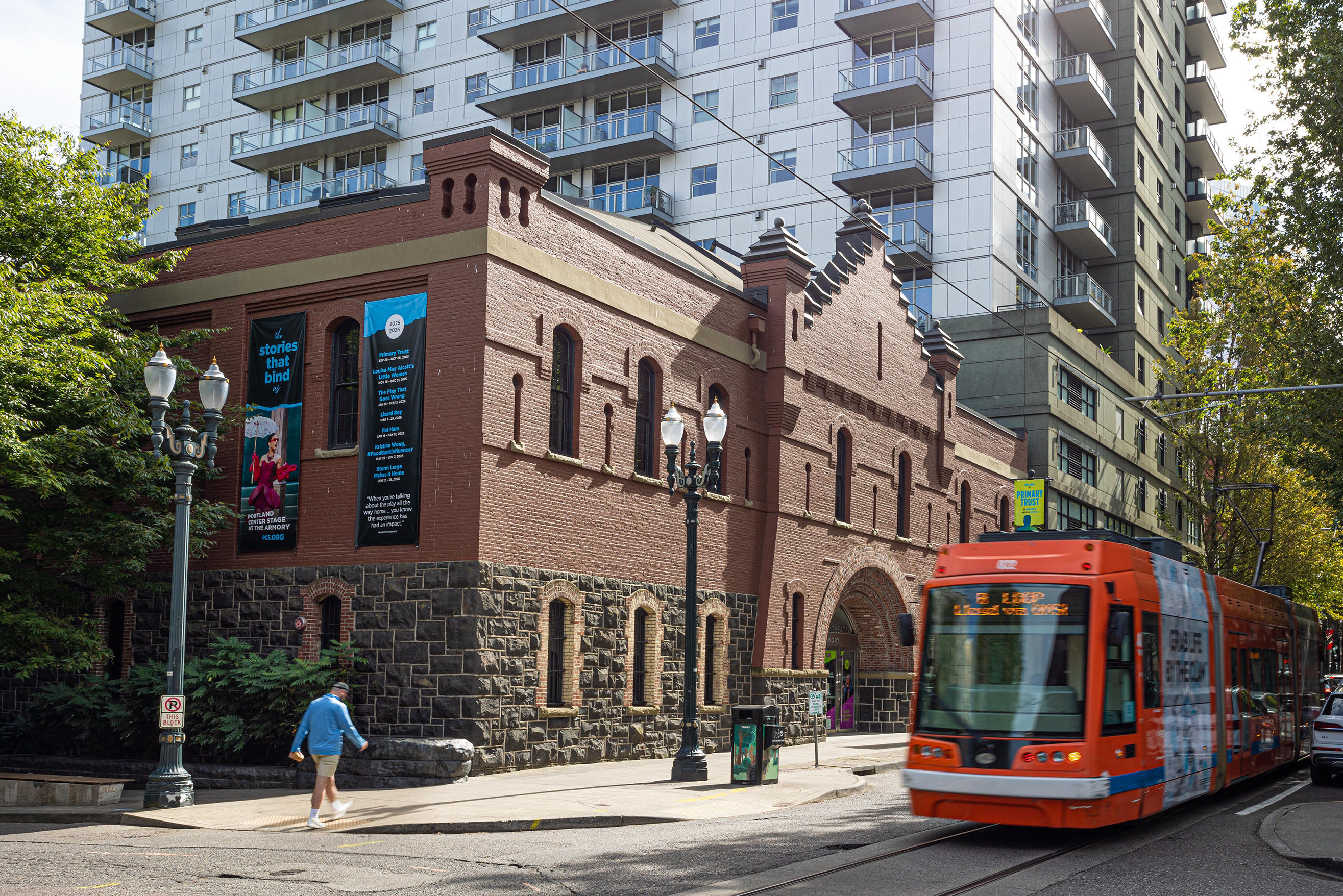Frida ... A Self Portrait Asks Why We Look in the Mirror

Vanessa Severo as Frida Kahlo in Frida ... A Self-Portrait at Portland Center Stage
Why do we love the things we love? Some of us burrow our heads very far into the sand to figure this out (perhaps even stooping so low as to write “criticism” for “magazines”); others never venture a guess. Writer/actor Vanessa Severo is very much a sand-burrower.
Since 2019, Severo has been performing a self-written one-woman show about Frida Kahlo called Frida ... A Self Portrait. The earliest iteration premiered at the Kansas City Repertory Theatre, and in mid-October, she brought it to Portland Center Stage to kick off the company's comeback season. It runs through November 7 in a production directed by Joanie Schultz.
The show's title nods both to Kahlo’s self-focused output and Severo’s desire to locate herself within the legacy of the Mexican artist. Before the lights go down, Severo emerges to ask the audience if they "see a Frida Kahlo in her." She's not a painter, she admits; she was born in Brazil, not Mexico. But damn if something about Frida doesn't compel her, so she darkens her brow a bit and the show begins. This unexplained (and perhaps unexplainable) impulse—for Severo to satisfy her fascination with Kahlo by becoming her—is the most fascinating and frustrating part of Frida ... A Self Portrait.

Early on, Severo stops the show to draw a parallel between Kahlo's polio-stricken childhood and her own congenital disorder, which left her without several fingers on one hand. It's a moving, funny, and extremely effective interlude. Toward the end, she recounts a somewhat deflating visit to La Casa Azul, Kahlo's ancestral home, in Mexico City. The furniture is gone, a locked closet contains unknowable secrets. Severo deduces that the omissions are Kahlo's challenge that she "paint her own story," but the parallel feels strained, like she's trying to convince herself as much as she's trying to convince us.
Still, even when its threads aren't crystal-clear, Frida is never less than involving. Severo presents Kahlo's story with a framing device that recalls Pablo Larraín's Jackie: an ailing Frida speaks to a journalist from her bed, reminiscing about her formative moments and taking periodic morphine shots to soothe the agony of her worsening spinal problems. We never see or hear from the journalist, but their interplay is still, somehow, magnetic. When Severo does transition between characters—Kahlo, her doctor, Kahlo's two-time husband Diego Rivera—it's seamless, and her script wisely resists any temptation to structure itself after the surreal trappings of Kahlo's work.
Unsurprisingly, the show hinges on Severo's performance, and it’s nothing less than an athletic feat. She's a choreographer, and her physical grace adds real fluidity to material that could, in lesser hands, calcify into an evening of park-and-bark monologues. As a writer, she gives a notable amount of time to Frida's physical suffering (a good third of the show sees her shrieking or weeping or biting her lip to keep from doing so) and she realizes it all without undue excess. For 80 uninterrupted minutes, Severo's is the only body we see and the only voice we hear, and she never comes close to outstaying her welcome.

She's aided by Jacqueline Penrod's smart, unobtrusive set, which strings three clotheslines across what appears to be an enormous four-poster bed. Here, we get our tasteful nod to Kahlo's visual style, plus a sort of onstage progress bar—when Severo has finished with all the outfits on one line, it's hoisted offstage, and we know we're that much closer to curtain call. Rachael Cady's lighting design beautifully delineates fantasy from reality, makes sometimes-stunning use of shadow, and works with the clean beats of Severo's performance to add depth to the show's dynamic rises and falls.
As it covers ever-greater swaths of time, Frida can feel a touch distant. All of the onstage suffering serves a purpose, but it stops hitting you in the gut after a while. Bafflingly, we never hear a word about Kahlo's politics, despite their centrality to her life, work, and legacy. And much like the sometimes-elusive connection between Severo and her muse, the passion driving Kahlo to paint is not always evident.
But as the story of one woman scrutinizing another, who overcame significant physical and social odds to leave a mark with her defiantly personal work, Frida is often quite moving. (It would make a fascinating double-bill with Artists Repertory Theatre's The Chinese Lady, about a once-visible woman who time forgot, currently running downstairs in the same building.) The lacunas at the show's center, about why Frida wants to paint or why Vanessa wants to be Frida, are notable, but the show draws power from sitting with their vastness. Why, after all, does anyone do anything? Watching Frida ... A Self Portrait can feel like watching an imaginative mind investigating our impulse to create and turn mirrors on ourselves in the first place.
As patrons filter into the theater, Frida runs a pre-show playlist of mostly contemporary tunes. One is "Your Love is Killing Me" by Sharon Van Etten, a searing rock ballad that ties carnage to emotional intensity: "Burn my skin so I can't feel you / Stab my eyes so I can't see." It's easy to imagine Severo hearing it, locating echoes of some private tumult inside of it, and later imagining the ways it parallels Kahlo and Rivera's rocky romance.
Is it a perfect comparison? Does it fit everything inside? Maybe not, but there's an undeniable pleasure to the attempt. Not everything fits inside Frida either, but Severo mostly catches what spills over. You leave wondering happily how she'll fill her next canvas.
Frida ... A Self Portrait
7:30 p.m. Wed–Sat, 2 p.m. Sat–Sun through Nov 7, Portland Center Stage at the Armory, $33–87




